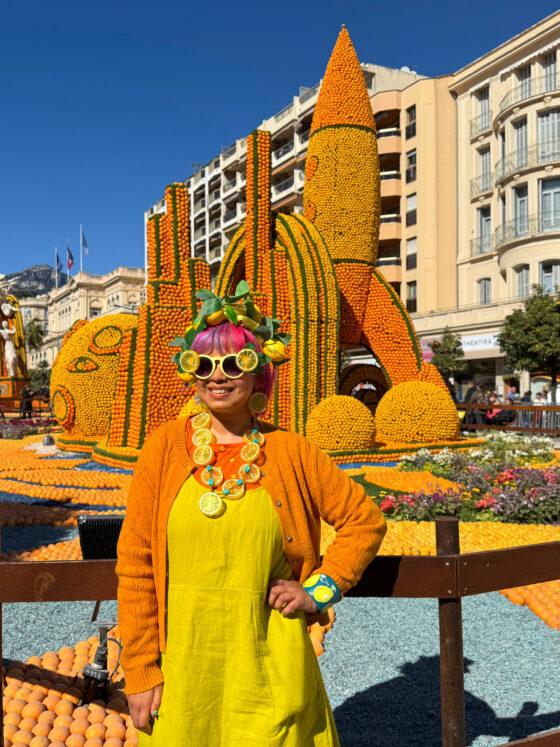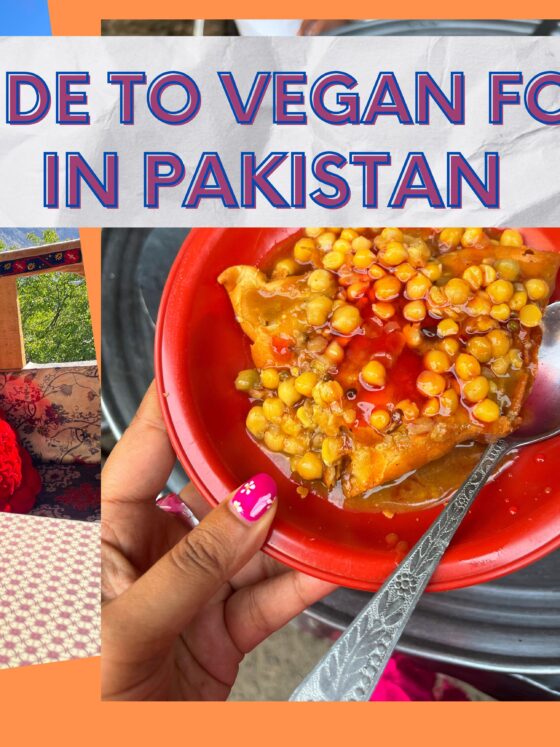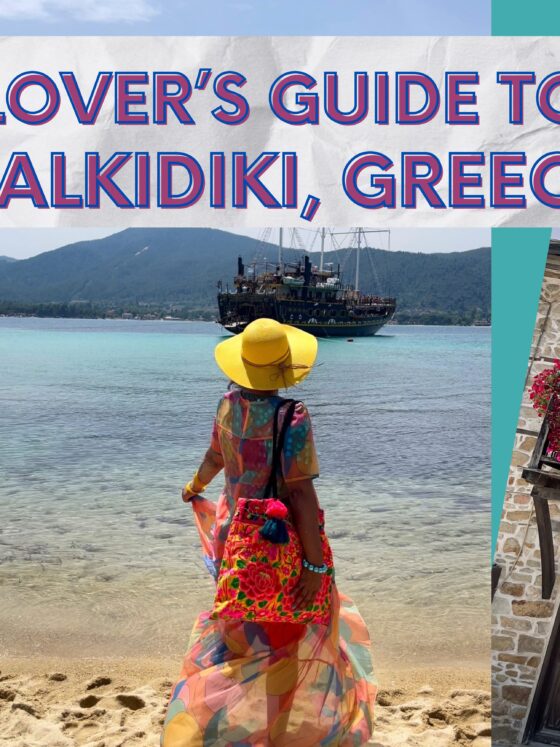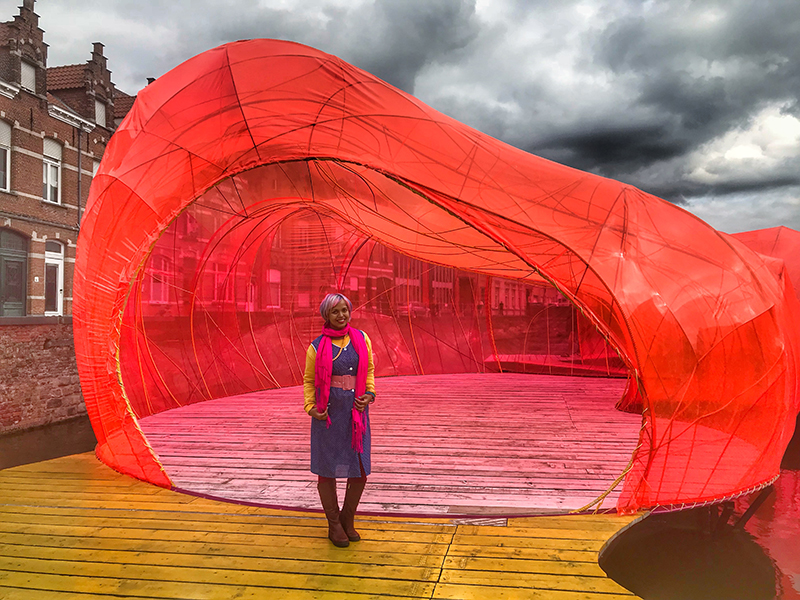Learning traditional Mexican Gancho Embroidery from the Istmo of Tehuantepec, Oaxaca, Mexico and trying on a Huipil Grande
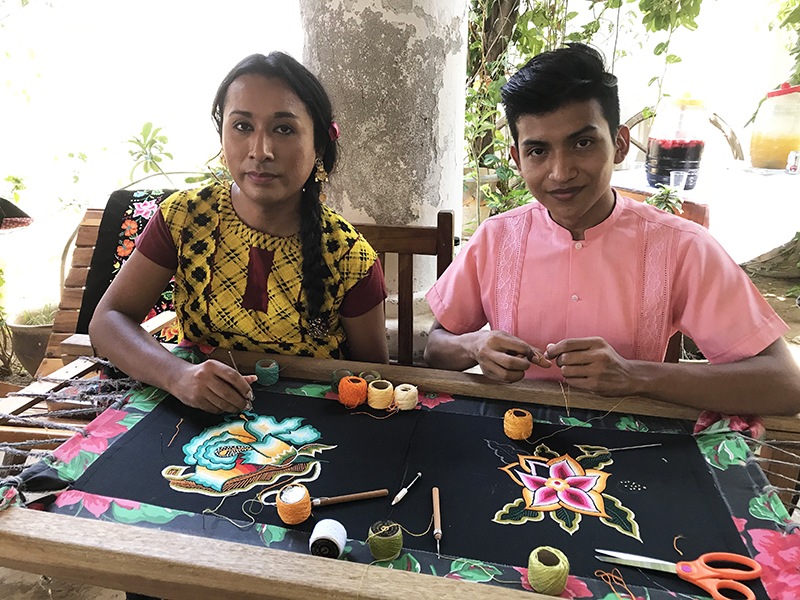
All over the markets in Oaxaca and beyond you’ll see clothing (typically traditional Mexican Huipils) decorated with giant flower embroidery. The region this stitched style originates from is The Istmo of Tehuantepec in the state of Oaxaca. A six hour journey by road from Oaxaca City, it’s one of the hottest, dustiest towns in the country and the work the local artisans produce is some of the most iconic and labour intensive. Before I delve into sharing my experience of learning how to do their beautiful gancho embroidery and trying on the local Huipil Grande, here’s some photos…




Even now, over a month after my visit I’m still completely in awe of the technique, which is so fine it looks like machine embroidery. I had to keep double taking at the finished works which were faultless and beautiful.
As part of the Haute Culture Textiles Tour I was, on I had the opportunity to do a workshop in one of the local Tehuana embroidery techniques called Gancho. It uses a small hook needle that creates tiny chain stitches. Most of the artisans dedicate their life to embroidery and it can take months to complete one garment, although you wouldn’t think it, the professionals work so quickly with their gancho needle. I on the other hand was super slow!
Learning to do Mexican gancho embroidery

For our workshop we were paired up and had a tutor to oversee both of us. Monty and I worked on different sides of a frame which held tote bags in them, pulled really taut. Our tutor Azucena Gracida had already embroidered ¾ of the floral design on our bags and our task was to learn the technique and complete the design.
The actual process requires taking the needle through the fabric, wrapping the thread around it and pulling it up in a loop to create the ‘chain stitch.’ Once mastered it becomes a muscle memory and you then continue doing it without thinking, although you do need to stop to ensure the stitches are going in the direction you want them to.
I noticed most of the group managed fine sitting in one position and gancho embroidering away, but I needed to swap my seating arrangement after every line I did because I found it easier to understand the direction I was going in if I sat opposite the frame each time.
If you’ve ever tried tambour embroidery, or beading the technique is similar to that but it has been over 15 years since I’d done any tambouring so I really did feel like a novice and a slow one too.

It’s not just women that do gancho embroidery, men do it too and there’s also a sizable muxe community, a third recognised gender in Zapotec culture who are also gancho embroiders. In fact the region of Teheuntepec is considered to be the most welcoming to the muxe and Thomas (who had the most impressive nails that I had no idea how she was able to embroider) runs an embroidery co-operative for muxi artisans that singer Elton John supports.
In between the session we drunk lots of glasses of delicious ice cold hibiscus juice and ate some yummy local pastries filled with coconut which was one of my favourite snacks of the trip.
The Huipil Grande


Gancho embroidery is typically seen on huipils, which is the traditional garment worn by indigenous Mexican women. Frida Kahlo has a particular appreciation for the Tehuana huipils from the region and you may have seen this iconic image of her wearing a huipil grande, which is the name given to the white, pleated lace headdress worn on special occasions such as weddings, and also during the summer Guelaguetza festivities.

It is only worn by the indigenous community of the Istmo of Tehuantepec. You’ll never see one for sale in the shops and wearing one if you’re not a Zapotec from Tehuantepec would be very frowned upon as it’s a dress that’s specific to this indigenous group.

With that in mind, I’m possibly one of the few outsiders who have tried one on and this was only because we met the designer of it, José Manuel who asked if anyone would like to try it. It was a once in a lifetime opportunity that I had to take up. Wearing it in this way was acceptable. Wearing it in any other way, at a music festival in another country or on a runway for example would be considered cultural appropriation and that’s why as a tourist I wouldn’t be able to buy one. It’s also why I didn’t wear it in the traditional style (of which there are two ways to wear it,) I just had a feel for what it’s like.
There can’t be many garments in the world so strictly worn by specific communities so to see them being worn and to try on one was one of the highlights of my trip. It felt light to wear but also very grand and I felt very special having it on.

As for the bag, well I didn’t get too far! Azucena and her daughter Ankala finished it off for me so I had a finished bag to take home. If I look closely at it I can spot the dodgy stitches I created mixed in with their beautiful artistry.




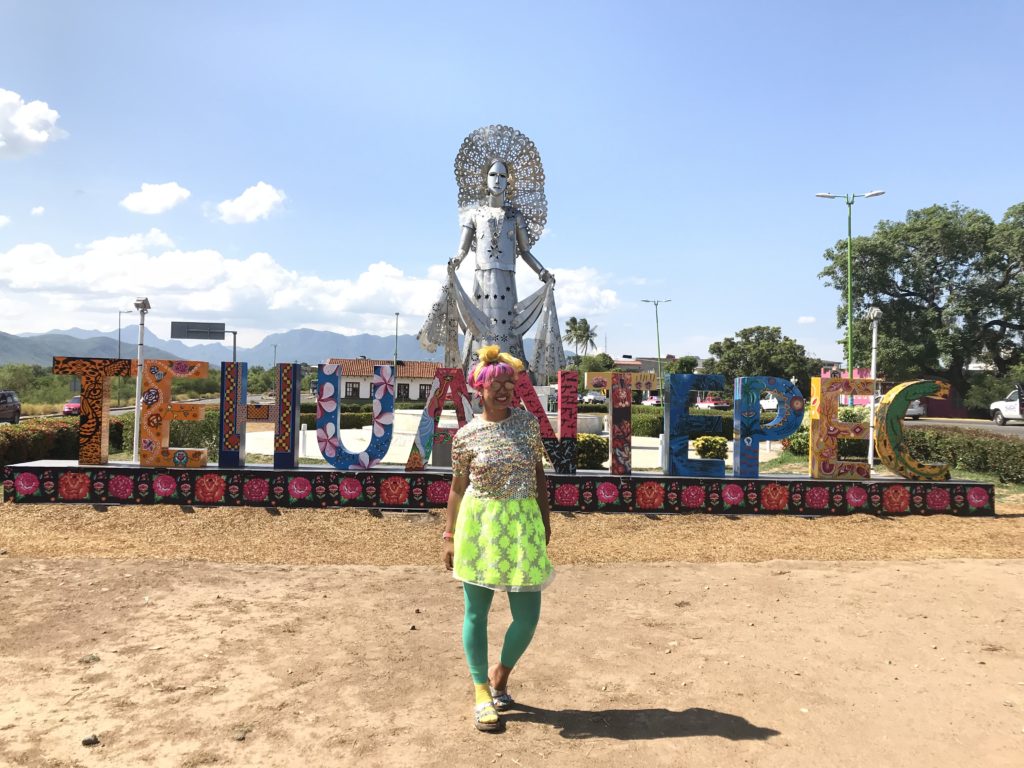
Liked this post? Leave a comment and share your thoughts. I’ve more posts from my Mexico trip to share soon. If you’re not seen it yet, here’s my one about visiting the Frida Kahlo Museum Casa Azul in Mexico City.
ALL IMAGES CRAFT & TRAVEL apart from the black and white image of Frida Kahlo found online.



